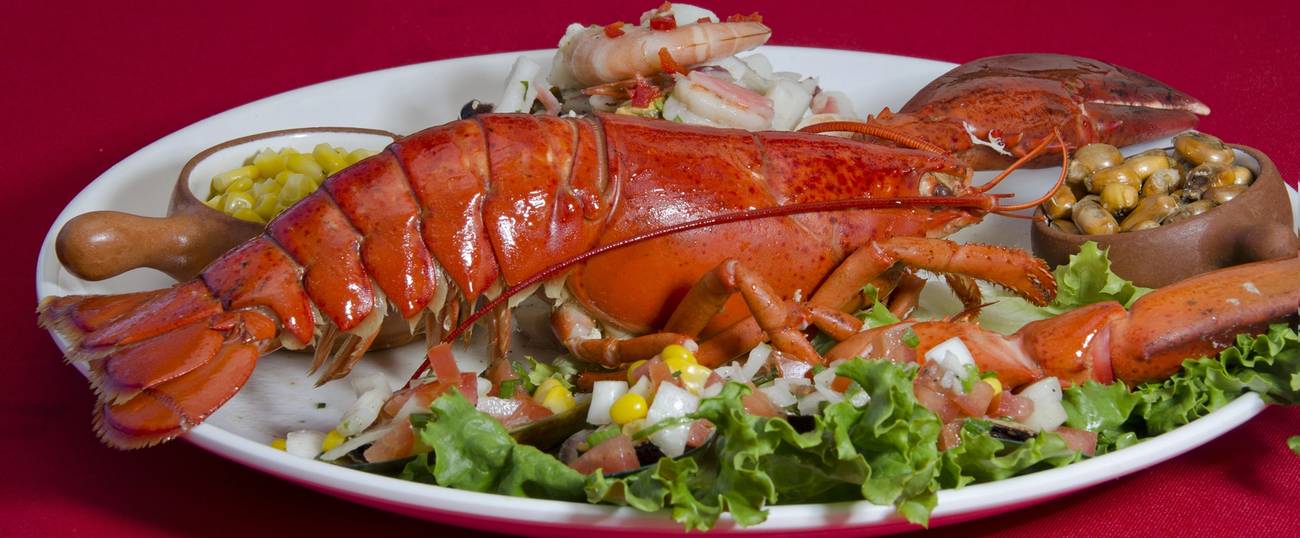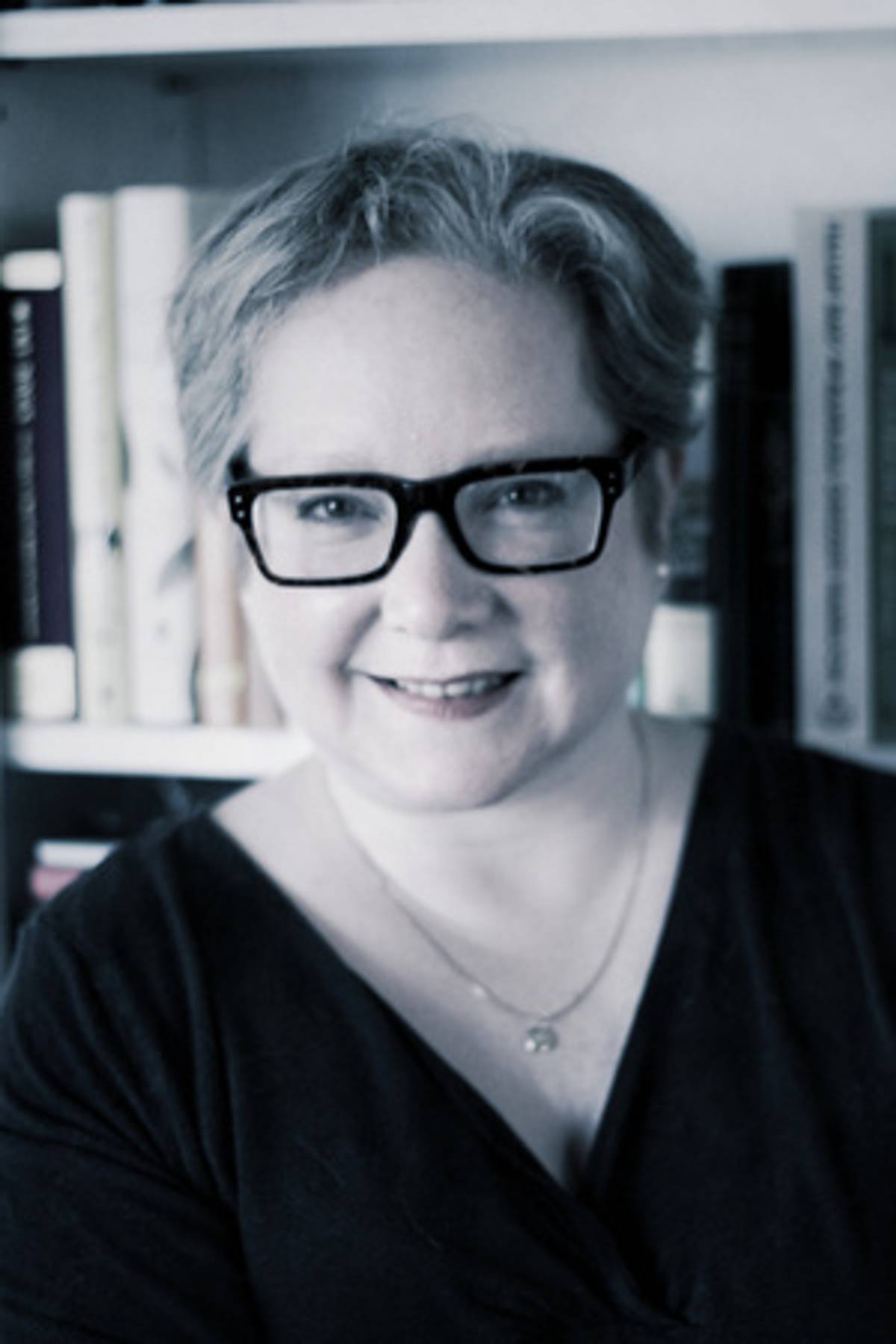Memories of a ‘Treyf’ Life
In her new memoir, Elissa Altman looks back on a lifetime of food, family, and the contradictions of life as an American Jew




Elissa Altman never fails to feels a frisson of recognition when Friday night approaches. That misty weekly stumbling into erev Shabbat opens and closes her extraordinary new memoir Treyf: My Life as an Orthodox Outlaw. In the first pages of the book, Altman is driving back from the Berkshires on a crisp fall Friday evening to the home she shares with her wife in Newtown, Connecticut. In her trunk, there is a freshly slaughtered pig—perhaps the first animal in the pecking order of foods forbidden to eat by Jewish law. But Altman’s memory of a very different kind of Friday night persists: “The sun begins to set slowly and I remember that it is Shabbos,” she writes, “and the prayer I spoke nearly every Friday night during my childhood summers echoes in my head—it’s been 40 years since I learned it—and I whisper it to myself: Thy Sabbath has come.”

Altman first claimed the Sabbath for herself during the childhood summers she spent in the Poconos at Camp Towanda. “I didn’t understand what Shabbat was,” Altman told me recently. “At sleepaway camp, everything came to a screeching halt on Friday nights. We dressed differently; we ate differently. We lit candles. Since then, Shabbat has so stayed with me that it has invaded my core muscles. No matter where I am or what I’m doing, on Friday nights I’ll see the sun going down and remember that it’s Shabbat.”
In person, Altman is warm and talkative, but it’s a loquaciousness occasionally tamped down by shyness: She generously shares her life story, and yet there is something guarded about her. That paradox adds an intriguing layer of complexity to a woman who has been described as “the love child of David Sedaris and MFK Fisher.”
Joanna Rakoff, author of her own acclaimed memoir, My Salinger Year, does not entirely see that comparison, but made her own: “Elissa has a novelist’s eye for character and story, which reminds me of Kate Christensen, as well as other food writers like Molly Wizenberg and Jessica Fechtor.” Writer and memoirist Dani Shapiro added: “There’s tremendous integrity and courage present in Elissa’s writing—nothing about her work ever feels sentimental or pushed too far.”
*
Treyf is Altman’s second book-length memoir, and in it, she traces the Yiddish word for unkosher to the biblical book of Leviticus, which lists prohibited, or treyf, foods. On the face of it, so many of the foods that Altman and her family have loved to indulge in are, strictly speaking, treyf. In the book, Altman’s father, Cy, the son of a dour Orthodox cantor, gives in to his guilt-ridden affinity for treyf by frying up bacon and Spam. That kind of fare bonds Altman to her father, who also surreptitiously takes her to lunch in expensive Manhattan restaurants where she eats oysters and whole lobsters.
But on a deeper level, treyf is Altman’s self-described identity at the intersection of American and Jewish life.
Shapiro says this meditation on the forbidden has earned Altman a place in the American Jewish canon. “From the title (which I love so much!) to the stories expertly stitched together throughout,” Shapiro wrote in an email, “Treyf is a uniquely Jewish story of rebellion, assimilation, shame, loss, family betrayal, and ultimately, growing up.”
Altman’s first book, Poor Man’s Feast: A Love Story of Comfort, Desire and the Art of Simple Cooking, chronicled her early relationship with her now-wife. Altman met Susan Turner, a Catholic 10 years her senior, online in 2000. A lifelong New Yorker, Altman spent weekends visiting Turner’s house in northwestern Connecticut; these visits morphed into longer stays until the two women decided to make a life together. Altman’s story of their courtship is buoyed in Poor Man’s Feast with recipes she and Turner make, ranging from dishes as basic as salami and scrambled eggs to the more foodie-oriented braised lamb shanks in red wine.
Both Rakoff and Shapiro came to Altman’s work through her James Beard Award-winning blog, Poor Man’s Feast. On her blog, Altman describes the role of food in her memoirs as “the grounding wire and the anchor; it is the silent collaborator in the story, the one who watches the tribe increase and the decades unspool and the rules be broken, repeatedly; food lures and betrays, beckons and soothes, and connects the present to the past in an unending loop.”
When Altman launched the blog, she branded it with an image of a 17th-century butcher’s pig. “A lot of readers found it funny that I write about pork a lot,” Altman said, “because my writing covers so many Jewish themes. I started to realize, in telling stories about my family, that we have all been on the outside looking in. We were not only eating treyf, but we were all treyf, especially me as a lesbian married to a Catholic woman. That was actually the impetus behind the book’s title.”
Altman does not include written recipes in Treyf. It’s a book born of olfactory memory—a book that captures a unique Jewish epigenetics. “There were no recipes—nothing was written down by [my maternal grandmother] Gaga,” Altman said. “Purely by virtue of the fact that she was in my childhood home is why I learned to cook. I didn’t get it from my mother or my other grandmother.”
“Angry Breakfast Eggs,” a short essay that speaks volumes about the complicated relationship with Altman’s food-averse mother, Rita, was anthologized in Best American Food Writing of 2012. Rita, who starved herself to rail thinness, was a singer who appeared on television during the 1950s and later modeled fur coats in a New York City showroom. In addition to chronicling Rita’s fraught relationship to food in Treyf, last year Altman also embarked on writing a yearlong series of articles for the Washington Post aptly titled “Feeding My Mother.” In those monthly columns, Altman balanced the challenges of coming to terms with her difficult mother while properly nourishing her:
Ours has been a lifetime of contradiction, paradox, incongruity, and argument: My mother is the bright to my dark, the thin to my heft, the tall to my short, the food-fearful to my chronically famished. Together, we have spent our lives starving: She, for the wisp-like physique she was certain would propel her onto the performance stage and model’s runway, and which, for many years, did; and I, for the sustenance and nurturing that I find at the table, in the act of cooking for and feeding others and myself.
Altman’s paternal grandmother makes hazy appearances in Treyf. In a dark, somber apartment located in the shadow of Coney Island, a place Altman remembers as being lit by the faint glow of Sabbath candles, her grandmother serves her heavy Eastern European food. “My father’s mother was a good cook, but riddled with quirks. She never used onion. Try making Eastern European food without onion,” joked Altman. In a memorable scene, Altman recalls the unfortunate timing of her grandmother feeding her a “cold boiled brain on a plate the day after I saw the premiere of Young Frankenstein at the Ziegfield in 1974.”
Altman’s depiction of her beloved Gaga, and the food Gaga cooked, poignantly demonstrates how food is love for her. Although the concept is overly familiar, Altman performs a kind of literary CPR on the phrase. In her capable hands, food becomes refreshingly synonymous with love. And that love mingles with the sensuous details of food preparation. “Gaga,” said Altman, “was one of the most natural cooks I’ve ever known. Love was simply associated with the fact that she said, ‘What do you want me to cook for you?’ It was pure love and nurturing.”
Altman asserts that another theme driving many of her family stories—stories she said she has spent a lifetime contemplating and “ultimately unraveling”—has been her encounter with the Holocaust. “I lost a number of family members in the Shoah,” she told me. “People my paternal grandfather left behind when he ran away from home in Eastern Europe in 1905 and immigrated to the United States.”
For Rakoff, that history, in part, “makes [Treyf] a very dark book that examines the rage and frustration of her parents’ generation. These brilliant, complex people felt stymied, held back, by their own parents’ fear, superstition, and values, as well as the specter of the Holocaust, which Elissa gorgeously, hauntingly evokes.”
In an essay for the On Being blog, Altman conjures the inevitable feeling of shame paired with the process of remembering and then shaping her life story:
The hurdles can make you think you’re better-or-worse-than. They can shut you down, prop you up, alter your course, tack your sails. They can result in moments of bliss and terror, calm and panic, hubris and humility, pomposity, paranoia, and paralysis. Often within moments of each other.
These obstacles may hinder permission to write, but they don’t withhold permission to succeed at it. The rickety, splintering plank connecting the two, as quavery as a rope bridge over a gorge, is reserved strictly for shame.
Altman catalogs the various instances in Treyf in which shame rears its head. “It’s the shame of being a person raised in a devoutly Jewish home and making a break like my father, which caused him so much anguish,” she said. “It’s about my grandfather leaving his family and then losing them in the Shoah. For me, it was once the shame of being a lesbian—attracted to women as a teenager when everybody was dating boys. It was the shame of being a survivor of child sexual abuse. Writing helped me overcome that shame, and cooking allowed me to nurture myself as well as to be nurtured.”
Shame also comes into play in the way Treyf portrays her father as a modern-day converso. For example, for a year Altman’s father says the requisite Mourner’s Kaddish for his father in the musty basement of their apartment building. Only Altman knows that her father is still drawn “to the sanctity … that tortured him; … he choked on hot tears as he chanted like the dutiful son he was, ignoring the portion of the law that also commands that the Mourner’s Kaddish be said in a synagogue.” Years later, Altman would learn that her father also secretly prayed the daily morning service until the day he died.
At the end of Treyf, Altman slips into a synagogue in midtown Manhattan on erev Shabbat to say the kaddish. The amber-like scene ties together many of Treyf’s themes: The Moorish style architecture reminds Altman of the Spanish Inquisition and Expulsion. There is the idea of praying surreptitiously. Judaism’s lachrymose history. And there is the ever-present hush of the Sabbath that continuously animates Altman’s Jewish soul.
***
Like this article? Sign up for our Daily Digest to get Tablet Magazine’s new content in your inbox each morning.
Judy Bolton-Fasman’s work has appeared in The New York Times, The Forward, The Jerusalem Report, and other venues. She is the author of Asylum: A Memoir of Family Secrets.